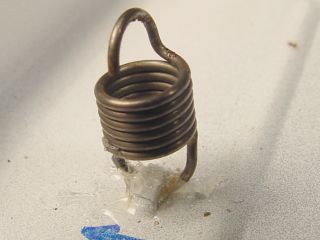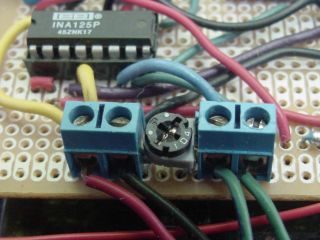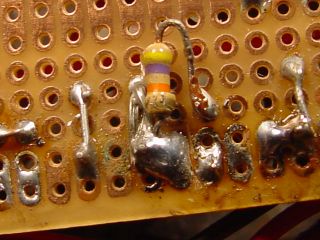Bathroom Scale Test Stand
At first I thought this damage was from the scary spike in our static test 8/7/05A which produced about
400 lbf thrust for a fraction of a second before settling down to average
about 175lbf.
But when I called Steve, who had kept the stand and worked on it in the
interim, he was clear that the damage was already done before this test happened.
Since he had not seen the inside of this stand before, the Dali-esque
parts did not seem all that strange.
So now I am convinced that the damage illustrated here was not caused by
the static test of 8/7/05, but by the CATO of 7/9/05 when a bad glue job allowed
the nozzle to blow off the motor casing.
I took the bent parts out, put them on an anvil and hammered them flat.
They straightened up pretty well, so this test stand is now back in order.
Here are a couple of changes made to this test stand recently:
The two little retaining springs that hold the platform to the base are
worrysome.
They fall out easily, and often take a couple of tries to get back in correctly.
And I was always worried I'd lose one - they are small and camo colored.
So I glued them in with a little Shoe Goo.
No doubt epoxy, silicone sealer, and many other stickums would work too,
but Shoe Goo is what I had at the moment, and it is fine.
This little trick makes the stand much easier to reassemble.

Steve Ghioto modified the amplifier board, adding a resistor and potentiometer
between the Excite+ and Excite- pins. This provides an external means to balance
the load cell. With this simple change, the scale can now be set to
read 0 volts baseline, rather than the 2 volts or so previously. Thus
we can use the full voltage range of the Dataq unit, which is about 7 volts,
and get better resolution. The resistor is 4.7k, the potentiometer currently
set to 12.6k and they are wired in series for a total of 17.2k ohms.


Jimmy Yawn
8/21/05





















